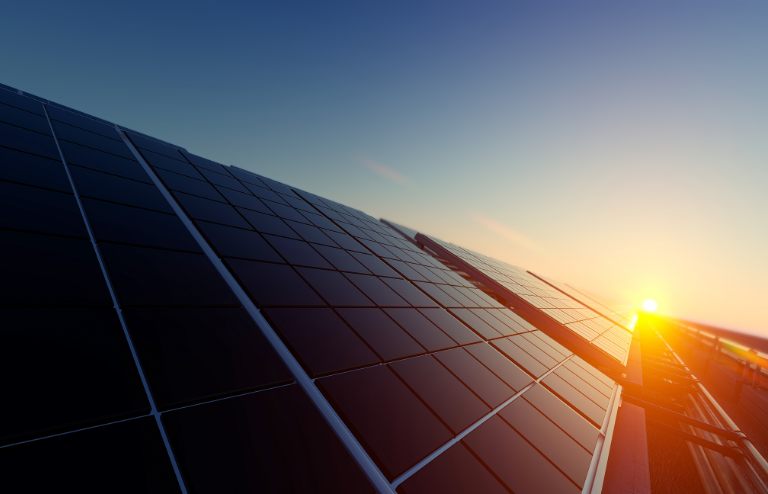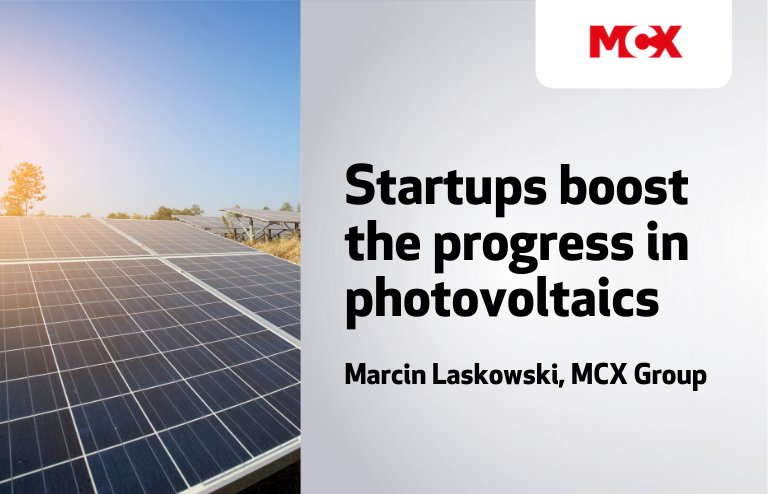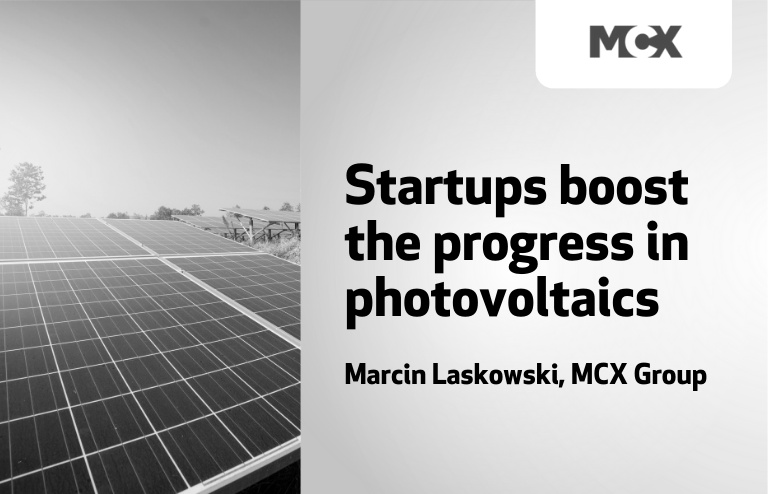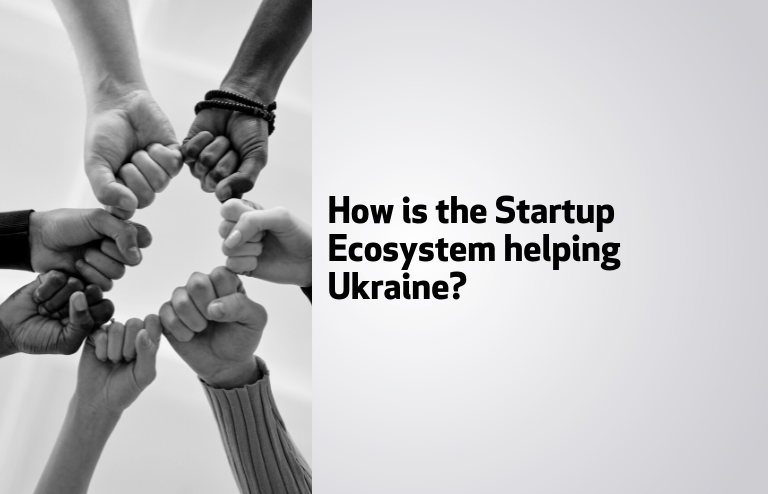Marcin Laskowski, MCX Group
Renewable energy sources are an indispensable element of the energy policy of any country in today’s world. One of the fastest-growing sectors of renewable energy currently are photovoltaic installations. The intensive development of this industry, lasting for several years, resulted in an increase in the installed capacity in photovoltaic power plants around the world to 580 GW at the end of 2019.
The factor that has a very positive impact on the development of the photovoltaic industry is the stabilization of the prices of silicon, which is directly used in the production of most photovoltaic panels, which in turn translates into a significant decrease in the prices of photovoltaic modules. According to experts, the estimated price for 2021 will be below 0.20 USD/W.
Types of photovoltaic panels
The increase in demand for electricity is an important factor mobilizing humanity to constantly search for the most efficient technology in the production of photovoltaic panels. To date, most installations are based on poly- or monocrystalline silicon panels. These are cells included in the first generation of photovoltaic panels.
The continuous improvement of the technologies known to us is evident in the creation of double-sided panels, the construction of which are made of crystal cell panels. The second generation of photovoltaic panels includes thin-film panels, such as amorphous panels, CIGS (copper, indium, gallium, and selenide), CdTe (cadmium telluride). Panels of this generation are less popular.
Among the new panel production technologies, we can also mention the third generation of panels, which are built on the basis of more environmentally friendly materials, and their main features are lightness, flexibility, lower production price, but usually also lower efficiency.
This generation includes cells: DSSC, organic cells (OPV), QD cells (quantum dots), and perovskite cells. Currently, the key development technology of this generation is solar cells made of perovskite. They show a large increase in efficiency in recent years and the affordable price of the materials they are made of.

Increase in the efficiency of advanced photovoltaic technologies
Among the latest technologies, the panels built in the PERC (Passivated Emitter Rear Cell) technology are distinguishable. They are characterized by an additional bottom layer of dielectric with small holes, which causes the sunlight to reflect back inside the cell. In addition, this technology provides an electrical connection between the top and bottom of the cell.
The described type of module shows its usefulness, especially in lower sunlight. An even more innovative technology is PERT (Passivated Emitter Rear Cell Totally Diffused), in which instead of a passivation layer with holes, a completely dispersed layer is used. Such a solution prevents the loss of an electron from the cell, which causes the electron to bounce from the bottom and again goes to the wafer of the silicon cell.
Yet another method of producing panels with increased efficiency is the construction of tandem photovoltaic cells consisting of many layers of various types of semiconductors, e.g. a classic crystalline cell and an additional layer of perovskite. This combination of technologies enables efficiency values of over 30% to be achieved.Modern solutions in the photovoltaic industry are not limited only to the production of more and more efficient panels but are also looking for new applications. An example of such activities may be the use of nanophotovoltaic technology for the production of windows and glazing or the use of photovoltaic tiles instead of conventional roofing materials.
Many new technologies owe their success to startups, e.g. power banks with an integrated solar panel, a device that allows to fully charge a smartphone even several times.
Progress in photovoltaics research
The progress of the photovoltaics market is also reflected in the research of methods allowing for the accumulation of already obtained “green” electricity in storage installations when the amount of electricity produced exceeds the temporary demand.
Due to the increasing profitability, warehouses are being increasingly used as elements of photovoltaic installations. The implementation of this technology brings many amenities, including reducing power fluctuations or aligning the work profile of renewable energy sources.
Thanks to the use of energy storage in prosumer installations, we will be able to avoid the costs of modernizing the low voltage grid. Other advantages include limiting overloads and reducing active power losses in low and medium-voltage networks.
These activities will avoid stagnation in the photovoltaic market and continue to search for more and more efficient technologies that help obtaining energy from the sun.

Current trends made by progress in photovoltaics
The enormous popularity of startups has also affected the renewable energy industry. The most innovative ideas include software for managing the investment risk related to the construction of your own installation, portable – modular energy storage, software facilitating design work, or investment models, thanks to which, together with other investors, we can buy fragments (individual panels) of large photovoltaic power plants reaping financial benefits later.
All ideas give a new view on the RES market and make concepts that were initially doomed to fail have a chance for further development, and large corporations gain an opportunity to acquire innovative technologies. Due to the implementation of startups, the development of solar energy entered the higher spheres and proved that limitations are only mental barriers.
Photovoltaic installations beneficial to the climate
The European Union has planned a strategy with the main goal of the European Green Deal. Thanks to the fully integrated actions of the Member States, it is to enable a long-term vision of achieving climate neutrality in the EU by 2050.
This is to a large extent supported by the increase in the number of renewable energy sources installations, but also the use of environmentally friendly industrial solutions, the introduction of fewer emission forms of transport, the introduction of organic farming, or the transition to a circular economy.
The EU sees a key role in the low-emission energy sector in the construction and development of photovoltaic installations. European countries will strive to dynamize the production capacity of photovoltaic installations in Europe. These measures are in line with the EU goal of reducing domestic net greenhouse gas emissions by at least 55% by 2030 compared to 1990 levels.
The future of photovoltaic power plants
When analyzing the chart published by the IEA, which presents the development forecast of individual energy sources for the next 4 years, it can be stated without hesitation that photovoltaic installations are the energy of the future.
It is not without reason that the greatest leaders in this industry are constantly investing in photovoltaics research and the development of new technologies. Extremely rapidly increasing efficiency and possibilities of associating farms with energy storage, as well as an increase in electricity demand, a decrease in the prices of devices and infrastructure needed to create a photovoltaic installation may guarantee an increase in the number of installed capacity.
Dynamically developing photovoltaic industry plays a special role in fulfilling the promises regarding the amount of carbon dioxide emissions to the atmosphere, and, consequently, striving to maximize the use of energy from renewable sources to supply its customers.
MCX Group is a partner of MIT EF CEE Autumn 2021 acceleration program. Want to know more about them? Check out what are they looking for in the startup world.






